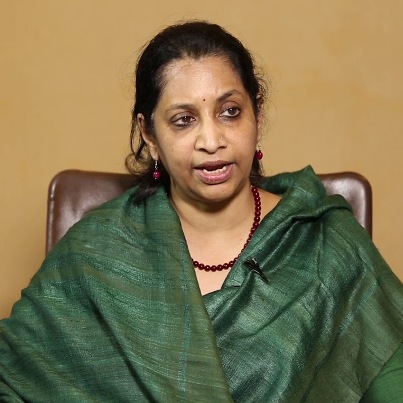  Telecom service quality continues to be a major concern, and the newly-unveiled National Digital Communications Policy 2018, if properly implemented can alone bring $1.2 trillion to the country's GDP, a top government official Friday said.
"Quality of service (QoS) is a big concern and we'll be meeting telecom service providers this month to discuss it and other issues such as fibre-first policy and digital readiness," telecom secretary Aruna Sundararajan said, on the sidelines of an industry event organised by Assocham and EY.
Sundararajan said that if the new policy is properly implemented, it can alone drive GDP worth $1.2 trillion, and added that industry estimates suggest that the fifth-generation or 5G technology has a potential to double the global GDP.
She said that getting the policy operation was critical, and that the department has a list of 104 initiatives under the national policy.
The official also puts high hopes in the sector and felt that the industry would work with the same pace as that of the government, and would not let the department down.
"Request telecom service providers to spare some time from the stress and do some work for the implementation of NDCP," Sundararajan said, and added that there might be some interim issues.
She said that the department would continue with reforms such as ease of doing business, reduce the burden of regulatory compliance to ensure greater convergence and scope to harness digital opportunities.
Sundararajan added that the industry should not always look at challenges but also see opportunities.
"I suspect, this is precisely an oversight. While you (industry) thought it was a challenge to take 3G and 4G, this is exactly where other people seen it as opportunity and leapfrog," the official added.
Citing officials in the department, Sundararajan said there was not a single year in last 20 years when service providers had not claimed of financial stress.
She also said that the government is working on the spectrum auction recommendations it received from the regulator and in the coming months, department would bring clarity on the timeline of airwaves sale, including 5G frequencies.
DoT is also organising workshops with state governments starting December to launch digital readiness index.
She said that country's telecom regulator was leading the way, and unlike other countries, the sector watchdog is setting up next practices for the industry.
"It is important to look at how to operationalise the various components of new policy, Ram Sewak Sharma, chairman, Telecom Regulatory Authority of India (Trai) said, adding that the NDCP 2018, unlike the previous policies, is distinct and provides a platform for digital communications space across other sectors of the economy.
Sharma added that unless further guidelines are created, things wouldn't work out.
"Digital delivery system needs to be factored in regulations across sectors," the top official added.
Telecom minister Manoj Sinha said that India's broadband connections were increased to 444 million from merely 61 million in 2014, with most competitive rates than anywhere in the world.
"The mobile app business is expected to grow 113 times, to Rs 270 billion by 2020," he said, and added that in 2017, 124 million smartphones were shipped in the country.
Global telecom leader at EY, Prashant Singhal said that digital is transforming the lives of 130 crore Indians with a click and tick.
"It is important to see how quickly we can get to $1 trillion economy," he said, adding that various immediate interventions can accelerate progression to Digital India. |